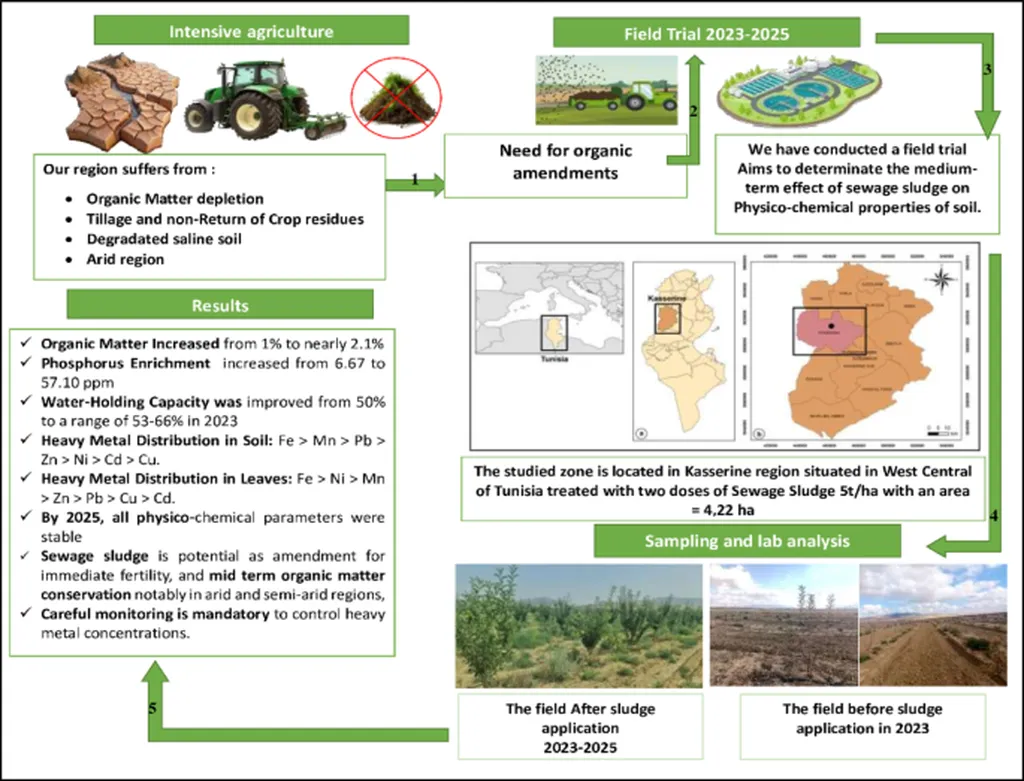In the quest to boost soil fertility in arid regions, farmers often turn to sewage sludge, a rich source of organic matter and essential nutrients. However, this practice comes with a significant caveat: the high lead (Pb) content in sludge can pose serious health risks, particularly when it accumulates in edible crops. A recent study published in *Heliyon* sheds light on this delicate balance, offering crucial insights for the agriculture sector.
The research, led by Maryam Tekyegah Tehrani Nezhad from the Department of Soil Science at Shahed University in Tehran, Iran, evaluated the impact of different levels of sewage sludge on lead bioaccumulation and health risk indices in six common vegetable species. The findings underscore the need for careful management of sludge application to mitigate potential health risks while maximizing agricultural benefits.
The study found that moderate levels of sewage sludge can indeed enhance plant growth, with aerial and root dry weights increasing by up to 59.7% and 46.9%, respectively. However, higher sludge levels led to a significant increase in soil Pb concentrations and root Pb accumulation, raising concerns about the safety of these crops for human consumption.
One of the most striking findings was the variation in Pb accumulation among different vegetable species. Radish, for instance, exhibited the highest transfer factor (TF) of 1.14, indicating substantial Pb translocation to shoots. Cress, on the other hand, had the highest bioaccumulation factor (BAF) at 1.33, demonstrating greater Pb accumulation overall. “This variation suggests that some crops are more susceptible to Pb uptake than others,” noted Tekyegah Tehrani Nezhad. “Selective crop management could be a key strategy to minimize health risks.”
The health risk indicators calculated in the study, including Hazard Quotient (HQ) and Cancer Risk (CR), exceeded safety thresholds, particularly for children. The HQ for children peaked at 6.839, significantly higher than that for adults, highlighting the heightened susceptibility of young consumers to Pb exposure.
So, what does this mean for the agriculture sector? The findings emphasize the need for a balanced approach to soil fertility management in arid regions. While sewage sludge can be a valuable resource, its application must be carefully monitored and controlled to prevent harmful Pb accumulation in crops. Adding amendments like biochar could reduce metal mobility, supporting safer and more sustainable soil fertility practices.
As the global population continues to grow and arable land becomes increasingly scarce, the pressure to maximize agricultural productivity will only intensify. This research serves as a timely reminder that sustainability and safety must be at the heart of our efforts to feed the world. By adopting a more nuanced and informed approach to soil fertility management, we can ensure that our quest for productivity does not come at the cost of human health.
In the words of Tekyegah Tehrani Nezhad, “The goal is not to abandon the use of sewage sludge altogether, but to use it wisely and responsibly.” With further research and innovation, we can pave the way for a more sustainable and secure agricultural future.

